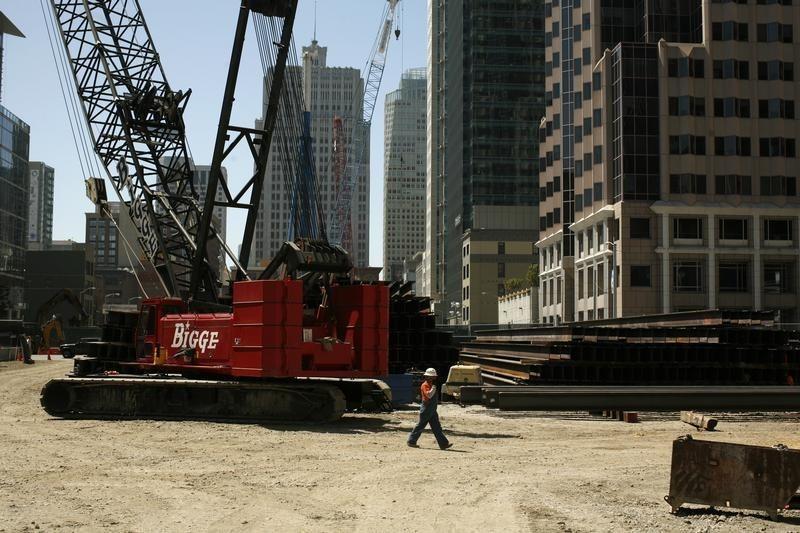Six-figure construction jobs are going unfilled
The construction sector is ready to boom in 2018, but there’s just one problem: There aren’t enough qualified workers.
A new report released by the Associated General Contractors of America (AGC), found that 75% of contractors want to increase their headcount in 2018, thanks to the newly-approved tax reform bill, the government’s push to rollback red tape, strong economic growth and a continuation of favorable sector trends.
However, 50% of companies reported having a difficult time filling both craft and salaried worker positions. Over the coming year, 53% of companies told the AGC that they expect to continue struggling to find qualified applicants. These challenges come despite the fact that 60% of firms reported increasing base pay to retain or recruit professionals and 36% provided incentives and bonuses toward the same end.
“The general population doesn’t know how rewarding and profitable [construction jobs can be],” Stephen Mulva, director of the Construction Industry Institute (CII), told FOX Business. “Six-figure salaries are not uncommon.”
Some of the positions than can lead to those lucrative salaries include welders, foremen and even some craft professionals, like instrument techs and crane operators, Mulva said.
Steve Green, vice president of the National Center for Construction Education & Research (NCCER), echoed the potential for construction workers to attain income at, or above, $100,000.
"I think that all craft professionals are in the mid-to-upper five-figures, and once you add in per diem and bonuses and incentives, it is not uncommon that we have workers making six-figures," he said, adding that often accounts "for a lot of overtime."
With a slew of good paying available jobs, why is the labor shortage so pronounced?
"Construction is not a sexy profession: we don't attract the younger workers like other professions do," NCCER president Don Whyte said, adding that his organization is trying to change public perceptions to show that through construction, families can earn a robust middle-class living.
Another one of the big problems, Mulva pointed out, is the nature of construction jobs, which often require regular travel. “The workers are almost like nomads right now … that’s a real deterrent to people getting into it,” he said.
That feature, however, could be changing in the near future. Mulva said the sector will be undergoing a “revolution” in order to overcome industry-wide challenges, including the labor shortage. One of the changes could involve shifting more work into a fabrication yard, which means sections of the project would be built in one location and then shipped to the final destination. This would eliminate the traveling requirement for some workers.
Technology, too, could eliminate the need for some employees to travel to project locations. Mulva predicts only one-sixth of workers will eventually work on the actual job site.
Another change that Mulva expects to see soon involves the commercial model, which he currently describes as “fragmented” and “cumbersome.” Restructuring that process could lead to increased profitability in the commercial environment, he said, and inspire a surge of new investment and startup companies looking to enter the sector.
The construction industry is already experiencing an influx of cash. U.S. construction spending rose to an all-time high of $1.257 trillion in November, the Commerce Department said on Wednesday. On Friday, the U.S. Department of Labor released the employment report for December. showing that the economy added 30,000 construction jobs last month, contributing to a total of 148,000 overall jobs created.
Meanwhile, the construction industry is potentially facing a 1.5 million worker shortage by the year 2020, Whyte said.
"This is going to become more and more of an issue for our country," he said.




















